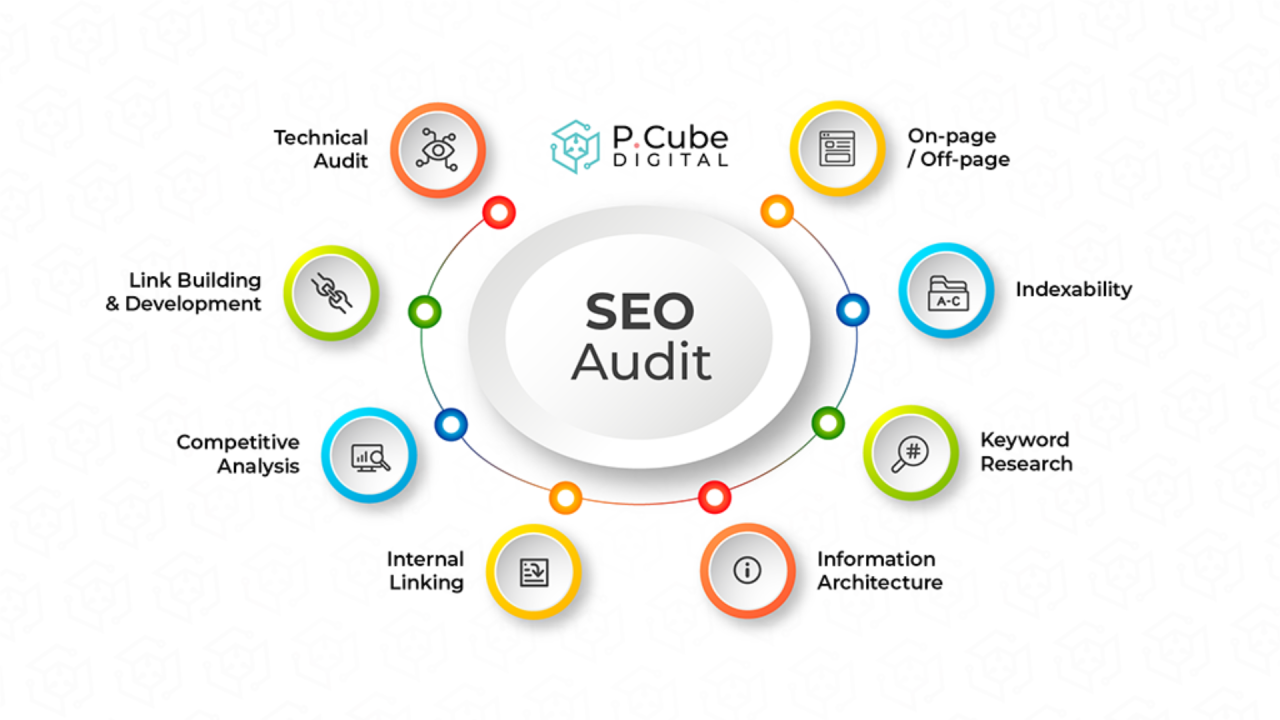SEO Audits & Tools: Ensuring Your Website is Search Engine Ready
What is an SEO Audit?
An SEO audit is a comprehensive analysis of your website's overall performance in search engines. It's like a health check-up for your website, identifying areas where it excels and areas where it needs improvement to rank higher and attract more organic traffic.
Why is conducting an SEO audit important?
- Improvement of Site Quality: Audit reveals issues that directly impact the performance of the website.
- Improved Website Ranking Improved quality directly translates to increased engagement of audience and eventually translates to ranking higher in search engines.
Understanding What an SEO Audit Includes
A thorough SEO audit encompasses a wide range of factors and analyses, including:
- On-Page SEO: Assessing the quality and optimization of content, title tags, meta descriptions, headings, URL structure, image alt text, internal linking, and other on-page elements.
- Off-Page SEO: Evaluating the quality and quantity of backlinks pointing to your website, as well as your social media presence and online reputation.
- Technical SEO: Checking your website's technical infrastructure for issues related to crawlability, indexability, site speed, mobile-friendliness, security (HTTPS), and site architecture.
- Local SEO: Analyzing your website's visibility in local search results, including your Google My Business listing, local citations, and customer reviews (for local businesses).
- Mobile SEO: Testing and analyzing the website for mobile-friendliness.
The Basic Steps of How to Do an SEO Audit
-
Run a Site Crawl: Use a tool like Screaming Frog SEO Spider or Ahrefs Site Audit to crawl your website and identify broken links, missing title tags, duplicate content, and other technical issues.
- Real-Life Example: E-commerce company "Etsy" uses site crawl tools regularly to identify broken links on product pages, ensuring a smooth user experience and preventing loss of potential sales.
-
Check Your Organic Traffic: Analyze your organic traffic trends in Google Analytics to identify any sudden drops or significant changes in performance.
- Real-Life Example: A local business company tracks their organic traffic to determine how their new blog articles affect their search rankings.
- Check for Indexing Issues: Use Google Search Console to see which of your website pages are indexed by Google.
- Check for Duplicate Versions of Your Site:: Make sure that any duplicate versions are being checked for better audience engagment.
- Check for Mobile-Friendliness Issues: Use Google's Mobile-Friendly Test tool to ensure your website is mobile-friendly.
- Analyze Your Site's Speed: Improve load speed to better audience engagement
- Analyze Your Core Web Vitals: Analyze all the web vitals of every website to ensure the content and layout is appropriate.
- Analyze Your Internal Links: Check Internal links of the website to ensure better interlinking of the site.
- Find Keywords You're Missing Out On: : Use tools to find new keywords to fill out website more precisely and effciently.
- Find Missed Backlink Opportunities: : Make sure to generate every possible way to get the new backlinks.
- Audit Your On-Page SEO: On-page SEO is very important for website engagement and is also considered good for SEO.
- Update Declining Content: : Regularly check and update the declining content to ensure it's quality and engage as new.
Tools for Conducting SEO Audits
Several powerful tools can help streamline the SEO audit process and provide valuable insights:
-
Google Search Console: Google's free tool provides valuable data about your website's performance in Google search, including search traffic, indexing status, crawl errors, and mobile usability issues.
- Real-Life Example: "HubSpot", a marketing company utilizes google Console to find best SEO practices for the website.
-
Ahrefs Site Audit: A comprehensive SEO tool that crawls your entire website and identifies technical and on-page SEO issues. It provides actionable recommendations for improving your website's performance.
- Real-Life Example: A e-com website named "Shopify" uses Ahrefs site audit to identify duplicate content issues.
- Ahrefs Site Explorer: Is used to perform a deep site auditing. Helps identify external links, errors, and issues of the website or page.
-
PageSpeed Insights: Google's free tool analyzes the loading speed and user experience of your website on both desktop and mobile devices. It provides recommendations for optimizing your website to improve page speed.
- Real-Life Example: News websites like "CNN" and "BBC" relies on this tool to maintain a high level user experince .
- SEMrush: Offers keyword research, competitor analysis, and local ranking tracking.
Understanding the Areas to Be Checked for a Website
These can be checked by making sure the website has all these qualities:
- The pages' accessibility and indexability in Ahrefs Site Audit
- Broken links and broken backlinks in Ahrefs Site Audit
- Duplicate content.
- Manual actions (Google penalties) in Google Search Console.
- Page Experience report in Google Search Console
- Core Web Vitals metrics in Google Search Console.
- Mobile-friendliness issues in Google Search Console
-
Issues related to basic on-page elements: missing H1 tags, meta descriptions, and title tags in Ahrefs Site Audit.

Conclusion
By performing proper SEO audits, one can improve his website's search engine visibility and can get increased traffic . It is better to regularly check the Google guidelines and new updates for best practice of SEO's.

No Comments